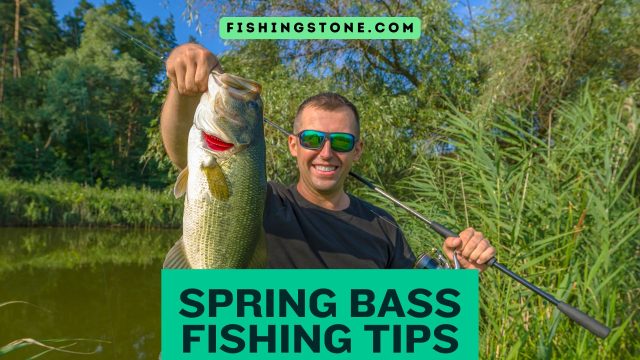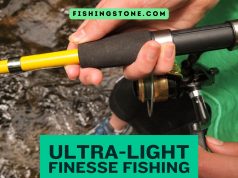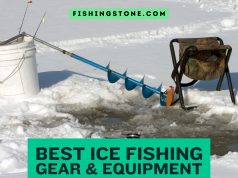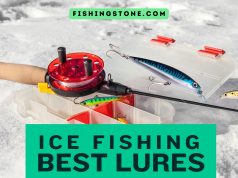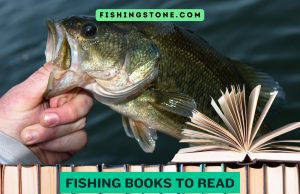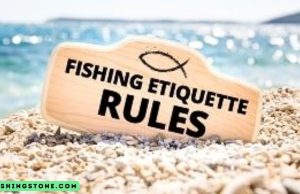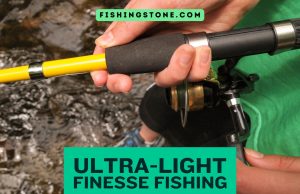Spring Bass Fishing Tips… Spring is prime time for bass fishing. Want to catch more bass this season? Learn these easy, pro-level spring bass fishing tips. We will cover the best lures and where to find active bass. Get ready to improve your catch!
5 Spring Bass Fishing Tips: Catch Bass Like a Pro
As the chill of winter recedes and dogwoods bloom, spring signals a vibrant awakening in the fishing world, especially for bass anglers. This transitional period, from the icy grip of early spring to the warmth of late spring, offers some of the year’s best bass fishing. However, success isn’t just about showing up; it’s about understanding the nuances of how bass behave as water temperatures rise.
To help you navigate these dynamic conditions and maximize your catches, here are five essential spring bass fishing tips that will have you reeling in monsters like a seasoned pro.
DISCLOSURE: Some of the links on this page are affiliate links, meaning, that at no additional cost to you, I may earn a commission if you click through and make a purchase. Affiliate commissions help fund this Fishing website, our rare fishing trips and my extreme coffee addiction.
Tip 1: Water Temperature and Bass Fishing
Water Temperature CHEAT SHEET For BASS FISHING Video.The single most crucial factor in spring bass fishing is water temperature, as it dictates the bass’s metabolism, location, and mood. Spring isn’t a single event; it’s a progression:
- Early Spring (Pre-Spawn: 45-55°F): This is when bass are still sluggish from winter. They’ll be deeper, typically holding on main lake points, channel swings, and transition areas near significant depth. They’re staging, waiting for conditions to warm enough to move shallow. Focus your bass fishing tips early spring efforts on slow presentations.
- Mid-Spring (Spawn: 58-70°F): Once water temperatures stabilize in this range, bass move onto shallower spawning flats, protected coves, and pockets. Largemouth bass will often be visible on beds. This is a crucial time for spring time bass fishing tips, requiring a delicate approach.
- Late Spring (Post-Spawn: 70°F+): After spawning, bass move off the beds, often retreating to slightly deeper water to recover before dispersing to summer patterns. They’re hungry and aggressive, presenting excellent opportunities for active retrieves.
Always carry a thermometer and pay close attention to the water temperature in different areas of the lake. A few degrees can make a world of difference.
Tip 2: Where do Bass Like to Hide?
Bass hiding spots revealed Video.Every angler has this question… Where do bass like to hide? Bass are creatures of comfort, and in spring, comfort means ideal spawning conditions and easy access to food. Their movements are highly predictable:
- Early Spring Largemouth Bass Fishing Tips (Pre-Spawn): Focus on the first available deep-water access points adjacent to shallow spawning grounds. Think creek channels, main lake points, subtle humps, and extended flat points leading into coves. Steep banks and rocky areas that absorb sunlight can warm faster and attract bass. In the midwest spring bass fishing tips often highlight these transition zones as ice-out occurs.
- Mid-Spring (Spawn): Look for flat, protected areas with a hard bottom (sand, gravel, small rocks) and cover like docks, laydowns, reeds, or lily pad stems. These are prime bedding areas.
- Late Spring (Post-Spawn): Bass will often relate to the first significant cover or structure outside their spawning flats – submerged points, brush piles, rocky ledges, or even deeper weed lines.
Tip 3: Match Fishing Lures to Bass’s Mood
Matching Lures to Largemouth Bass Location and Aggressiveness Video.Match Fishing Lures to Bass’s Mood. The “right” lure depends heavily on the stage of spring and the bass’s activity level. Note: The ” ► LINK ” below take you to Amazon.
- Early Spring: Bass are cold and sluggish. They respond best to slow-moving baits that stay in the strike zone longer.
- Jerkbaits (suspending): Cast out, twitch, and PAUSE for extended periods (5-15 seconds). ► LINK
- Bladed Jigs (Chatterbaits): Slow roll them along the bottom or through cover. ► LINK
- Lipless Crankbaits: Yo-yo them off the bottom. ► LINK
- Jigs (with craw trailers): Crawl them slowly, mimicking a crawfish. ► LINK
- Mid-Spring: Bass can be protective and territorial, but also active if not on beds.
- Late Spring: Bass are recovering and feeding aggressively.
- Make Your Own Fishing Lures – If you are handy, you can design and make your own lures.
For more information you can read our post ” 7 Best Spring Bass Fishing Lures to Catch Bass “. These bass fishing in spring tips ensure you’re presenting the most appealing meal.
Tip 4: The Retrieve and How to Attract Bass
The Retrieve and How to Attract Bass Video.Even with the right lure, the wrong retrieve can turn a hot bite cold.
- Early Spring: Think ultra-slow. A general rule for bass fishing tips early spring is the colder the water, the slower your retrieve. Let jerkbaits suspend, crawl jigs, and barely twitch soft plastics. Sometimes, just letting the lure sit on the bottom for an extended period after a short hop is all it takes.
- Mid-Spring: Experiment. Bass can be finicky. Sometimes a slow, methodical pull is key; other times, an erratic, aggressive twitch might trigger a reaction strike, especially when they’re guarding beds.
- Late Spring: Often, faster, more aggressive retrieves will draw strikes from post-spawn bass. Burning a buzzbait or quickly reeling a crankbait can elicit powerful reaction bites.
Don’t be afraid to experiment with pause durations, erratic twitches, and steady retrieves until you find what the bass prefer that day. Use your fishing pole in an erratic way at times. You just never know where fish will hit.
Tip 5: Observe, Adapt, and Stay Mobile
The most successful bass anglers are keen observers and highly adaptable.
- Look for Signs: Pay attention to water clarity, baitfish activity (shiners, shad), bird activity (loons, herons dive-bombing), and especially wind direction and sunlight. All these can influence where bass are holding.
- React to Conditions: A sudden cold front can push bass back deeper and make them lethargic, requiring a return to early spring bass fishing tips and slower presentations. A warming trend might activate them, moving them shallower.
- Don’t Get Stuck: If a spot isn’t producing, grab your fishing pole and move on. If a lure isn’t working, change it. Spring bass are notoriously fickle. The legendary bass fishing spring tips often boil down to trial and error. Cover water, explore different depths and structures, and pay attention to where you get bites.
Spring bass fishing is a dynamic puzzle, but with these five pro tips, you’ll be well-equipped to solve it. By understanding the critical role of water temperature, targeting key transitional areas, matching your lures to the bass’s mood, varying your retrieve, and staying adaptable, you’ll dramatically increase your chances of success. Armed with these spring bass fishing tips, go forth and experience the thrill of catching bass like a true professional this season!
Other Posts
- Top 7 Lures for Spring Bass Fishing
- Little Known Facts About Bass
- Your Guide to 4 Great Austin Bass Fishing Locations
- Funny Videos of Kids Catching Fish
- 5 Simple Tips for Enjoying Fishing
- Discover the Top 7 Fishing Spots in America
Spring Bass Fishing Frequent Asked Questions
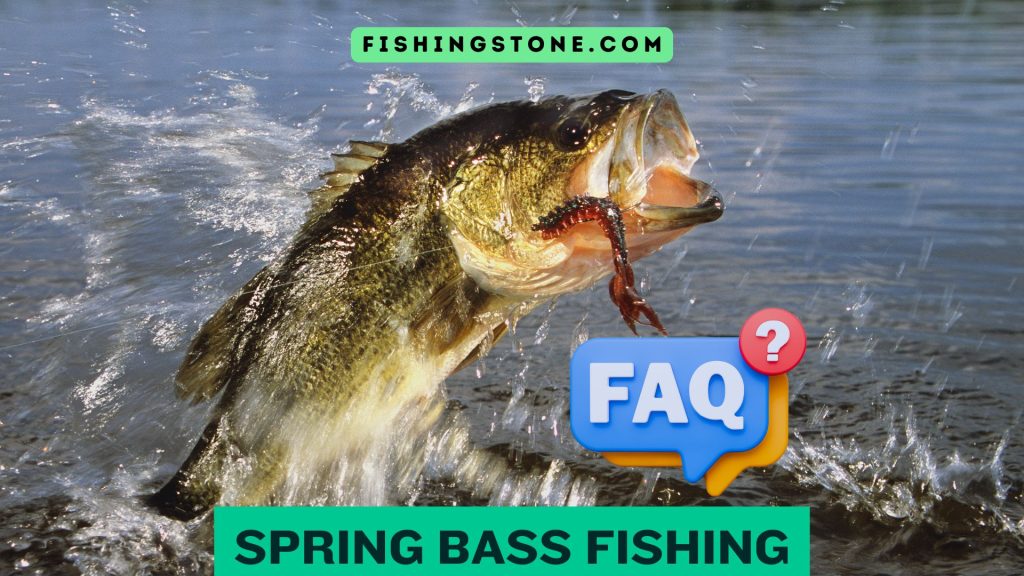
What is the best lure for early spring bass fishing? In early spring, when water temperatures are cold (45-55°F), slow-moving baits are best. Suspending jerkbaits, bladed jigs (Chatterbaits) slow-rolled, lipless crankbaits yo-yo’d off the bottom, and jigs with craw trailers are highly effective.
Where do bass go in early spring? In early spring (pre-spawn), bass will be found deeper than in later spring, often seeking warmer water or staging areas. Look for them on main lake points, channel swings, ditches, and the mouths of creeks and coves that lead to eventual spawning flats. They’ll often be near the first significant drop-offs or structure.
Is spring a good time for bass fishing? Absolutely! Spring is widely considered one of the best times of year for bass fishing. Bass are actively moving, feeding, and preparing to spawn, making them more predictable and often more catchable than during other seasons. However, it requires specific strategies tailored to the changing conditions.
What water depth should I target for bass in spring? This varies significantly by stage: * Early Spring: 8-25+ feet, depending on the lake and structure. * Mid-Spring (Spawn): 1-8 feet, as bass move shallow to build and occupy beds. * Late Spring: Can be a mix, from 5-15 feet as they recover and then transition to deeper summer patterns.
How does a cold front affect spring bass fishing? Cold fronts can significantly slow down spring bass fishing. A sudden drop in temperature, especially after a warm spell, can make bass lethargic, push them deeper, and shut down their bite. It often requires a return to slower presentations and targeting deeper, more stable areas. Conversely, a prolonged warming trend will activate bass and move them shallower.
Thank You for Reading Our 5 Spring Bass Fishing Tips Post
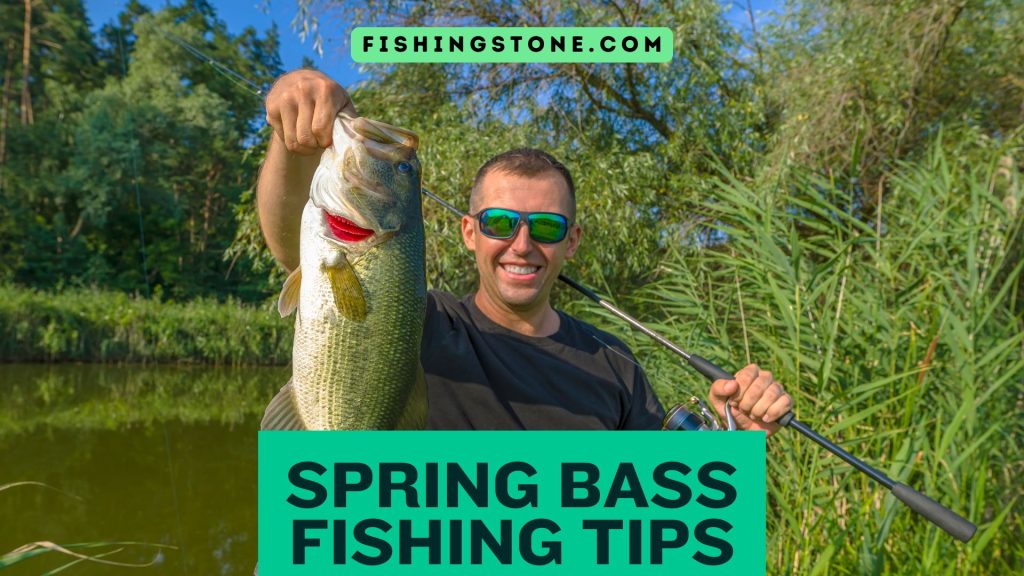 Thanks for checking out our spring bass fishing tips. We hope these ideas help you catch more fish this season. Remember to adjust your lures to the water temperature. Early spring means slower retrieves. As it warms, speed up your presentation. Always look for bass near cover. They like to hide and ambush prey. We’re glad you read our post. Happy fishing!
Thanks for checking out our spring bass fishing tips. We hope these ideas help you catch more fish this season. Remember to adjust your lures to the water temperature. Early spring means slower retrieves. As it warms, speed up your presentation. Always look for bass near cover. They like to hide and ambush prey. We’re glad you read our post. Happy fishing!
Happy fishing!
We post on several sites on Socia Media. By joining us on your favorite ones you can get updates on our latest Fishing Posts.
Find us on Facebook – Twitter – Pinterest – YouTube
Hope you have fun Fishing every day. Fish On!


